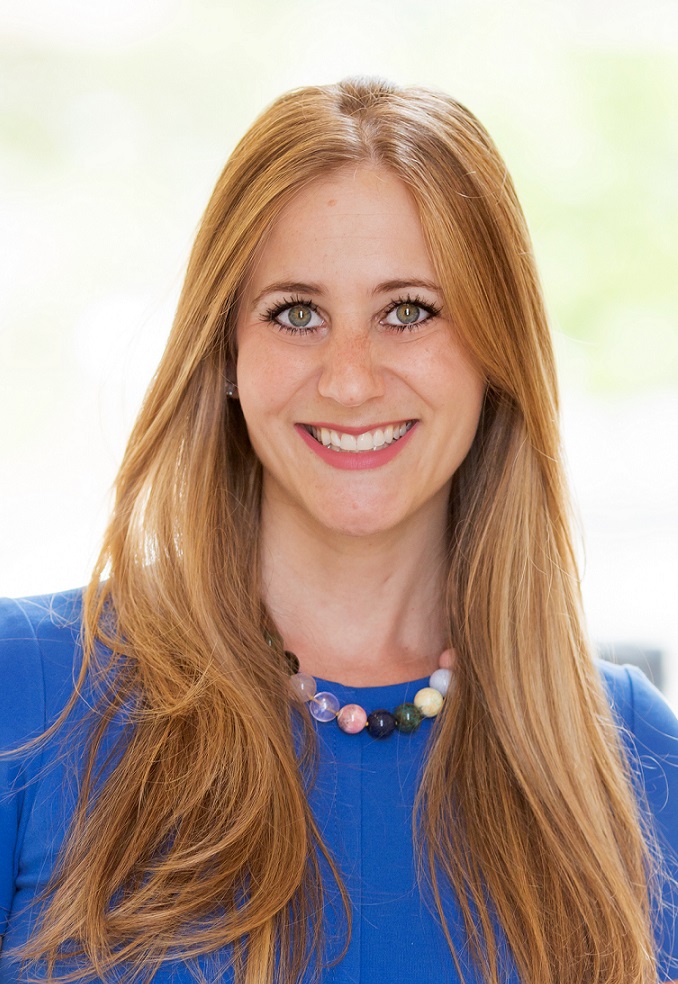SC CTSI Research Scholar is Developing New Ways to Lessen Trauma for Kids Undergoing Chemotherapy
A USC occupational scientist is extending her previous research with children with autism spectrum disorder to identify mechanisms to manage stress and pain during medical procedures.
The repeated pain, discomfort, and anxiety children with cancer experience during chemotherapy treatments can have serious health ramifications, explained Leah Stein Duker, PhD, OTR/L Research Assistant Professor at USC Mrs. T.H. Chan Division of Occupational Science and Occupational Therapy.
These treatments are a grueling ordeal both for the children as well as their caregivers, putting both at risk for adverse mental and physical health consequences, such as posttraumatic stress symptoms (PTSS) or posttraumatic stress disorder (PTSD).

Leah Stein Duker, PhD, OTR/L
"There's been a lot of research on children undergoing invasive procedures for cancer treatment, but very little is known about their stress reactions to chemotherapy infusions themselves," said Duker. "This a serious omission because the vast majority of pediatric cancer patients go through chemo. They may have just one surgery, for example, but many potentially stress-inducing infusions."
Duker has already delved into this topic with another patient population. Alongside a team of researchers led by Dr. Sharon Cermak, she previously studied ways to help children with autism spectrum disorder (ASD) better tolerate dental procedures; dental visits are significantly more challenging for children with ASD compared to typically developing children.
In that research, Duker studied the impact of a sensory adapted dental environment on the physiological and behavioral distress experienced by children receiving dental care. Experimenters dimmed and altered lighting, added calming music, and wrapped the children in a special “butterfly” vest to provide a hugging sensation.

Distress measures--determined by factors such as skin conductivity, overt behavioral distress, pain and discomfort, among others--all improved in the adapted environment in both children with ASD and the typically developing control group. "We found that environmental adaptations reduced the activation of the sympathetic, fight or flight, nervous system, along with pain and challenging behaviors," said Duker.
Translating findings to many patient populations.
These findings, Duker believes, have broad implications for clinical/translational research into reduction of distress and pain for other patient populations during challenging health care procedures.
Her first clinical/translational target is the chemotherapy infusion environment for pediatric cancer patients.
This is largely new investigatory ground, requiring numerous steps to determine experimental elements, such as which factors of the infusion procedure and environment cause the greatest distress, and how to develop an objective measure of stress responses and pain that could be utilized in clinical studies.
As a scholar in the Southern California Clinical and Translational Science Institute's (SC CTSI) Workforce Development program, which administers the Clinical and Translational Research Scholar (CTR) program, Duker is receiving training and support to expand her research and study environmental modification interventions for other patient populations.
For Duker, the CTR training is enabling her to carve out a unique niche within occupational science that can help strengthen her development as a principal investigator. "The idea of the environmental model has been used but I'm applying it to a totally new population and a new procedure," explained Duker.
Each year the SC CTSI Workforce Development program awards a cohort of up to four fellowships (formerly called KL2 scholars) to clinical and translational investigators. The training provides fellows such as Duker opportunities to learn and refine a wide range of scientific and professional skills needed to become clinical investigators, including the knowledge to complete a grant application with a strong probability of being funded.
Cross-disciplinary collaborators.
In fact, the scholars frequently become collaborators, part of a strategy by Workforce Development educators to develop skills in the increasingly important areas of team science and cross-disciplinary research.
For example, Duker at first had trouble recruiting participants for her research, but got recommendations from fellow and past scholars when she presented a research update at a CTSI meeting.
"In our group of scholars we have overlapping interests to some degree -- in pediatrics, oncology, and stress reduction," said Duker. "So we are all going through the program together and learning not just from the SC CTSI instructors but also from each other."
The Clinical and Translational Research (CTR) Scholar Program is a three-year program created to support research career development for health professionals or individuals with research doctoral degrees who wish to pursue formal training and a career in clinical and translational research. The SC CTSI Workforce Development (WD) group (formerly Education, Career Development, and Ethics-ECDE) has funding through the National Institutes of Health (NIH), to award up to four Clinical and Translational Research (formerly KL2) candidates every year.



